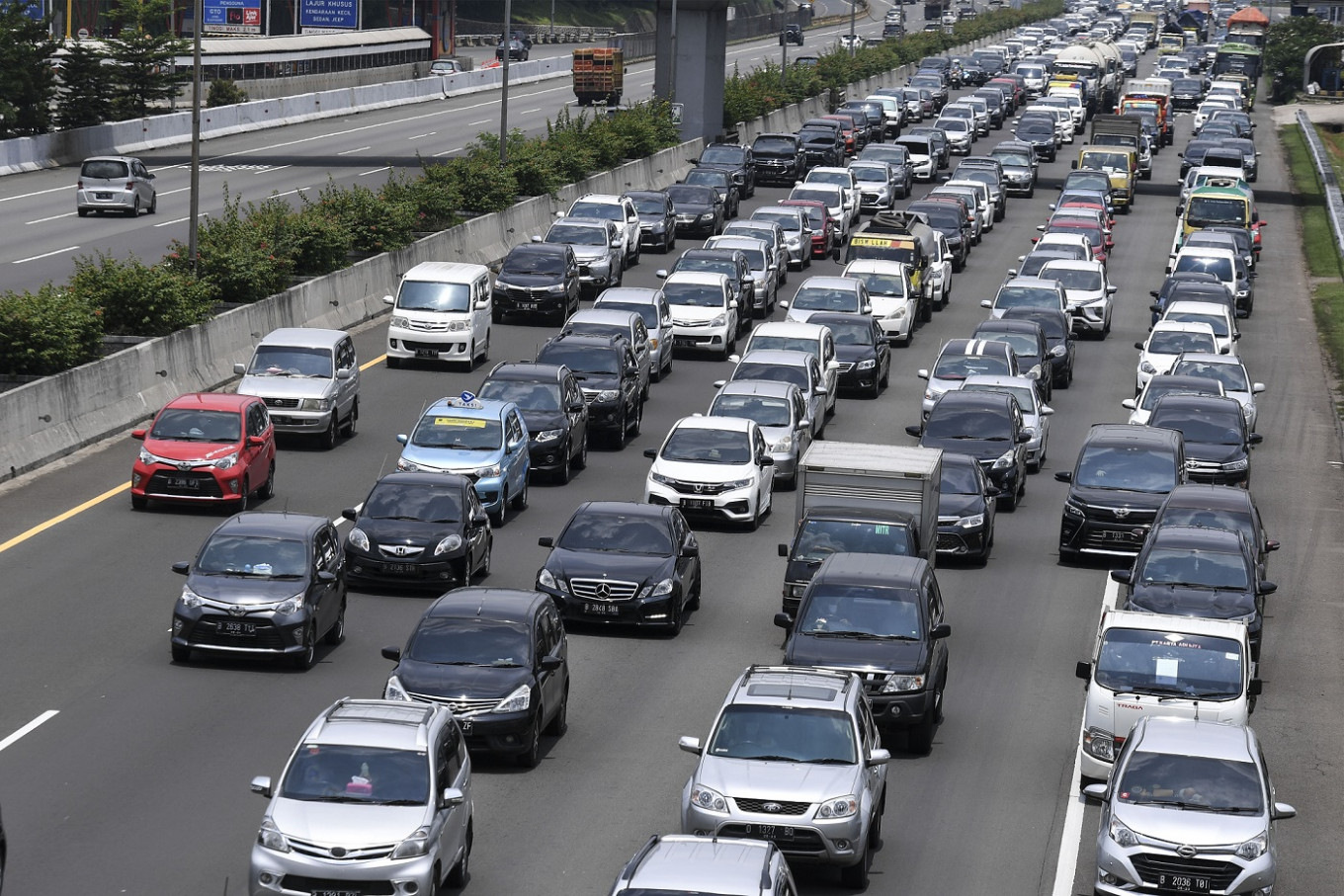Popular Reads
Top Results
Can't find what you're looking for?
View all search resultsPopular Reads
Top Results
Can't find what you're looking for?
View all search resultsCar sales surge 70% after luxury tax cut
Nearly 85,000 cars were sold domestically in March, up 72.5 percent from the previous month, after a luxury tax cut came into effect in Indonesia.
Change text size
Gift Premium Articles
to Anyone
D
omestic car sales skyrocketed in March as a luxury tax (PPnBM) cut for small cars came into effect, but overall sales remained below prepandemic levels, meeting observers’ expectations about the effect of key incentives on consumer spending.
Nearly 85,000 cars were sold domestically in March, up 72.5 percent from the previous month and up 10.5 percent from March of last year, according to data from the Association of Indonesian Automotive Manufacturers (Gaikindo).
Some consumers decided in March to buy a new car, while others made purchases they had delayed from February – when the incentive was announced – to take advantage of the savings.
Despite the growth, only 187,021 cars were sold in the first quarter of 2021, compared to last year’s first-quarter sales of 236,890.
“The government’s PPnBM relaxation helped increase car sales in March,” Gaikindo chair Yohannes Nangoi told The Jakarta Post on Tuesday. “Hopefully, car sales will continue to increase all year.”
The government offered the tax cut in an effort to boost consumer spending and help the economy recover.
Read also: Tax cuts for new cars, houses come into effect
Consumer spending, which accounts for more than 50 percent of Indonesia’s gross domestic product (GDP), is a key driver of the economy. It fell 2.63 percent year-on-year (yoy) in 2020, led by a decline in retail sales, imported goods purchases and wholesale car sales, according to Statistics Indonesia (BPS).
The PPnBM cut applies to sedans and two-wheel-drive (2WD) vehicles with engine capacities below 1,500 cubic centimeters (cc). A 100 percent tax cut applies for the first three months, and a 50 percent tax cut applies for the following three months.
Economists, analysts and Gaikindo previously said the incentive would help boost annual car sales in 2021 from 2020 levels, but they also noted that sales would likely remain below 2019 levels as the economy was still recovering from a recession.
Gaikindo’s Yohannes expected annual car sales to pick up to 750,000 in 2021, 50 percent more than last year’s sales but still fewer than the 1 million cars sold in 2019.
Similarly, credit rating agency FitchRatings predicted in a Feb. 19 commentary that 600,000 to 700,000 four-wheeled (4W) vehicles would be sold in 2021, also above sales in 2020, but far below those of 2019.
Read also: Analysts warn luxury car tax cut 'off target'
"The drastic increase in car sales shows that the PPnBM relaxation policy works and is effective," Piter Abdullah, research director at the Center of Reform on Economics (CORE) Indonesia and a vocal advocate for the tax cut, said on Tuesday.
He added that the increased sales from the policy would drive manufacturers to ramp up production, which could boost the overall economy.
On April 1, the government expanded the PPnBM cut to include vehicles with engine capacities from 1,500 cc to 2,500 cc, which are typically larger cars.
The new regulation grants 2WD car buyers a 50 percent tax cut from April to August and a 25 percent cut from September to December. Meanwhile, 4WD car buyers will enjoy a respective 25 percent and 12.5 percent tax cut in the same periods.
Read also: Tax cut for new cars to include bigger models
“We hope that when the 100 percent tax cut for the 1,500 cc cars ends in May, consumers will still have the appetite to buy cars, and hopefully, the start of the tax cut incentive for the bigger models in April will also help increase sales,” Yohannes said.
He acknowledged that car sales could dip in May, the month of Idul Fitri, because consumers usually refrained from buying new vehicles a week before and after the Muslim holiday as they reallocated funds for holiday expenses.
Compared to other manufacturing sectors, the automotive industry booked the country’s sharpest fourth-quarter decline of 18.98 percent yoy, BPS data shows, as automakers slowed down car and motorcycle production.
Industry Minister Agus Gumiwang Kartasasmita said in March that he had set a target for vehicle production levels to return to 1 million per year in 2021 and for exports to be boosted.
According to Gaikindo data, the country produced 690,176 cars last year, about half of the 1.2 million produced in 2019. Meanwhile, 255,312 cars were produced in the first quarter of 2021, down from the 328,012 produced in the same period in 2020.
“Honestly, production is quite far behind the market demand. This is a good problem, but the automotive industry is trying hard to meet the demand,” Yohannes said.
The main issue for production, he added, was the global shortage of automotive semiconductors, which provided power for battery management, in-car entertainment systems and driver assistance systems, among other functions.










